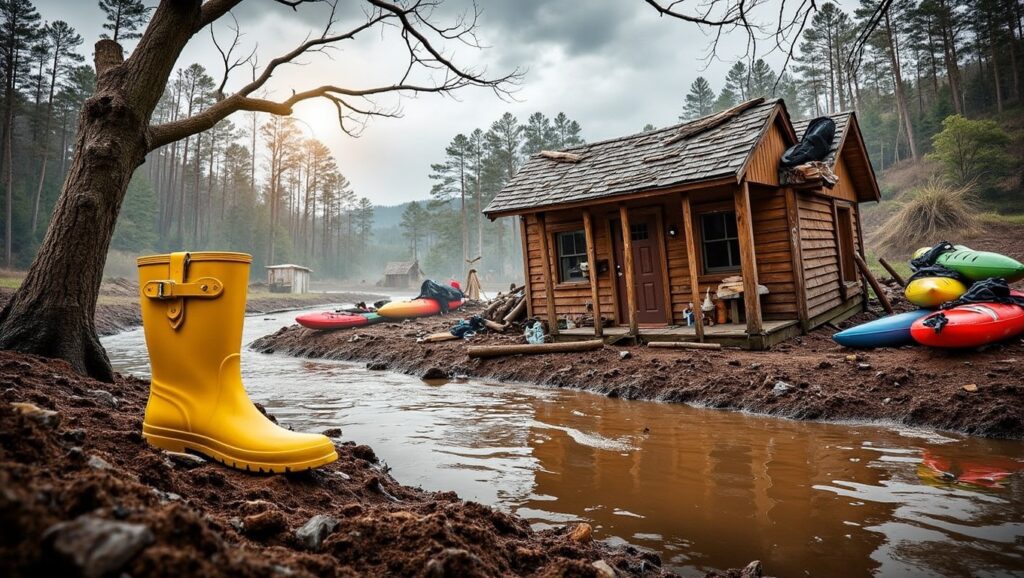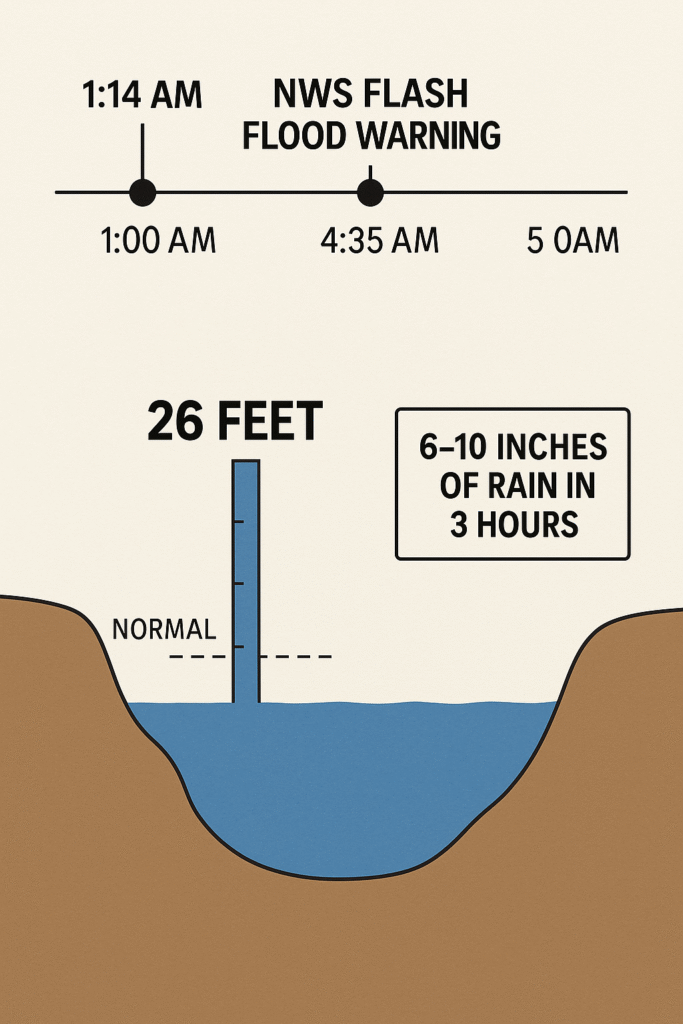‘A Scene of Unimaginable Tragedy’: Texas Hill Country Floods Devastate Summer Camp, Killing Dozens of Children

seed=3291012513
KERR COUNTY, TX – Catastrophic flash floods tore through the Texas Hill Country in the pre-dawn hours of Friday, July 4th, leaving a trail of devastation centered on a beloved summer camp and claiming the lives of at least 68 people in Kerr County, including 28 children. The disaster, fueled by an unprecedented deluge of rain, turned the Guadalupe River into a raging torrent that smashed through cabins while hundreds of campers slept.
The event has triggered one of the largest search and rescue operations in the state’s history, with state and federal agencies working tirelessly as the death toll continues to climb. The majority of the fatalities occurred at Camp Mystic, a 99-year-old Christian girls’ camp that was hosting 750 children. As a horrified nation watches, the tragedy is raising difficult questions about the safety of riverside camps and the adequacy of flood warning systems in one of America’s most vulnerable regions for flash floods.
A Wall of Water in the Night
The disaster unfolded with terrifying speed. In just three hours, a storm system dumped what amounts to four months of rain on the region, with some areas receiving over 10 inches. This sent a surge of water, estimated to be up to 26 feet high, roaring down the Guadalupe River.
The National Weather Service (NWS) issued a flash flood warning for the area at 1:14 a.m. CT. However, the first official reports of flooding from the Kerr County Sheriff’s Office did not come until 4:35 a.m. CT, leaving a critical gap where evacuations could have occurred. By then, it was too late for many at Camp Mystic and nearly 20 other youth camps along the river. Survivors described being woken by a sound like a freight train as a wall of water ripped cabins from their foundations.
Heartbreak and Heroism at Camp Mystic
Amidst the devastation, stories of profound loss and incredible bravery have emerged. The camp’s longtime director, Dick Eastland, is being hailed as a hero. He was killed while trying to evacuate children from the floodwaters. Eight-year-old camper Renee Smajstrla, who her family said was “having the time of her life,” was among the young victims.
Survivors recount tales of heroism, with camp counselors pushing children through windows to safety and the camp’s night security guard, Glenn Juenke, placing girls on floating mattresses to ride out the surge. Many who escaped huddled together in the dark, singing and praying for their missing friends. As of Sunday, 10 children and one counselor from the camp remain missing.

Questions Over a Warning System That Wasn’t There
As the community grieves, scrutiny is falling on Kerr County’s emergency preparedness. It has been revealed that for at least nine years, county officials had considered installing an enhanced flood warning system, including sirens, but the project was never funded. In a 2016 hazard mitigation plan, the county described its existing warning capability as “marginal at best.”
While the NWS insists its alerts were timely, some critics argue that federal staffing cuts have hampered the agency’s ability to effectively communicate imminent threats to local emergency managers. The White House has denied these claims. The debate underscores the immense challenge of providing last-minute warnings in “Flash Flood Alley,” a region known for its limestone geology that allows floodwaters to rise with little notice.
A National Response to a Local Tragedy
The scale of the Central Texas flooding has prompted a major response. Governor Greg Abbott declared a state of disaster, and President Donald Trump signed a major disaster declaration, unlocking federal funds for relief efforts.
Scientists note that while the region is naturally prone to such events, climate change is likely exacerbating their intensity. A warmer atmosphere in the Gulf of Mexico can hold more moisture, providing extra fuel for storms that can produce extreme rainfall. As rescue teams continue their grim search, the tragedy at Camp Mystic serves as a devastating reminder of nature’s power and the human cost of a changing climate.








